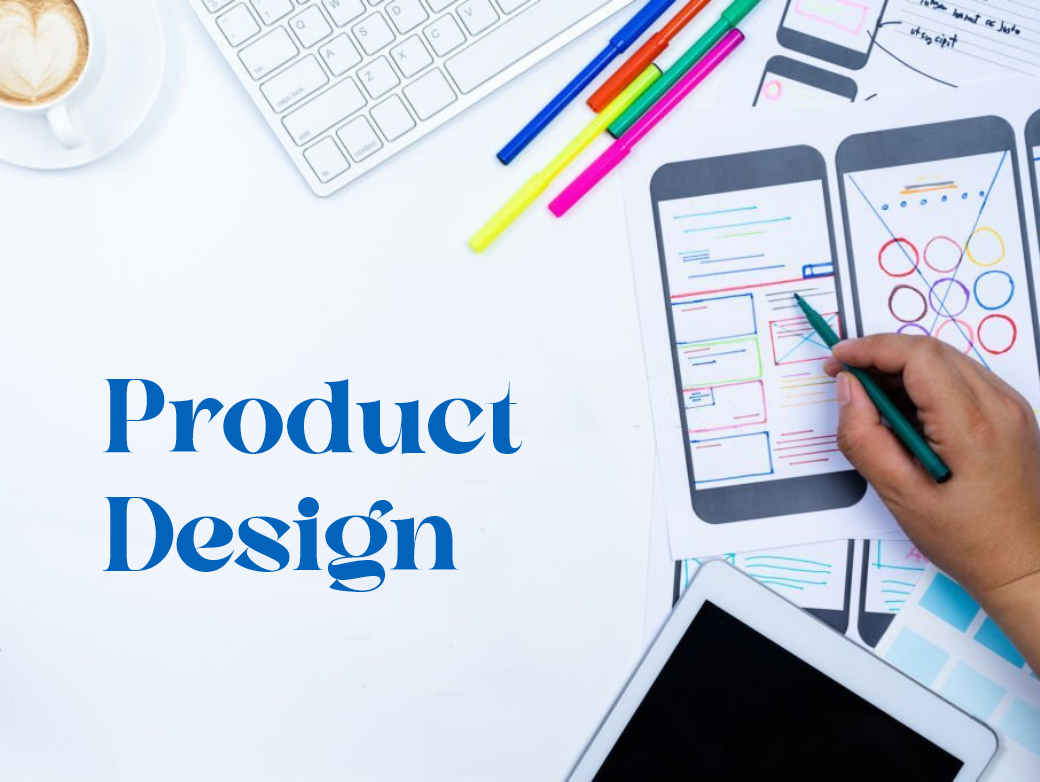Product design Principles are more than just creating visually appealing products; it’s about creating solutions that address real user needs and solve market problems. The success of a product relies on a solid understanding of the target user and their specific challenges. At Assort Tech, we follow a unique approach to product design, combining innovative modern UI/UX design with our core expertise in e-commerce & retail innovations. This ensures that every product is crafted to meet both user expectations and business goals.
Turn insights into innovative, user-friendly designs with AssortTech. If you’re looking for professional modern UI/UX design services or solutions for e-commerce & retail innovations, our team at AssortTech is here to help. Our design process ensures that your product is not only visually appealing but also addresses user needs effectively.

Principles of Product Design:
When you think of product design, it’s easy to get caught up in the aesthetics, but the core of effective design is much deeper. At its essence, product design principles is about solving problems, meeting user needs, and creating an intuitive experience. Here are the key product design principles that we follow:
- Address Existing Problems: The most important part of product design is to solve real problems. Whether it’s for an app or a physical product, always ask, “Does this solve a problem effectively?”
- Empathy is Key: As designers, we must understand the end-user’s perspective. Being empathetic helps us create designs that are intuitive and accessible.
- Keep It Simple and Intuitive: The simpler and more intuitive your product is, the easier it will be for users to adopt. A simple design often leads to a more positive user experience.
- Follow UX Fundamentals: Stick to proven practices for optimal user experience. Using well-established principles will improve usability and minimize confusion.
- Emotional Connection: Beyond functionality, great product design should evoke positive emotions, creating a connection between the user and the product.
- Collaboration is Vital: Successful product design isn’t a solo effort. Teams of designers, developers, project managers, and business analysts collaborate to build effective products.
- Flexible Approach: Every product is unique. A flexible design approach allows us to adapt to the specific needs of our clients and their target audiences.
The Process:
At Assort Tech, we employ a systematic product design process that ensures every project is thoughtfully executed. Here’s how we approach it:
- Define the Product Vision: Start with a clear understanding of the problem the product is solving and the needs of its users.
- Market Exploration: Research existing solutions and competitors to see what works and what doesn’t. Learn from what’s already out there and look for areas of improvement.
- Gather Feedback and Generate Ideas: Once you have a concept, gather user feedback to validate your ideas and refine the design.
- Ideate and Innovate: Challenge assumptions and explore multiple design solutions before choosing the best one.
- Build and Refine: Develop the prototype and refine based on user feedback, constantly testing and iterating.
- Seek Validation: Test the product thoroughly before launching. This ensures that the design meets user expectations and functions as intended.
- Track Performance: After launch, monitor key metrics to understand how the product is performing in real-world scenarios. Use this data to refine the design further.
Key Elements :
Product/Function: Focus on the essential functions that the product needs to deliver. Keep it simple and cost-effective while prioritizing user experience.
Users/Personas: Build user personas based on real research. Understanding who your users are and what their pain points are is critical to designing a successful product.
Competitors: Understand the competitive landscape to identify gaps in the market or areas where your design can stand out.
Vision: Align your product’s vision with business goals and communicate it clearly to all stakeholders.

Benefits of a Good Product Design:
Good product design drives customer satisfaction, improves product performance, and boosts sales. It’s not just about creating something beautiful—it’s about creating a product that works well, solves problems, and meets user needs. A well-designed product is essential for business growth, efficiency, and brand loyalty.
Conclusion
Effective product design requires understanding, vision, and execution, with a focus on user needs. UX Consulting—including UX Design and UX Strategy—helps ensure that products are intuitive and aligned with business goals, making them more user-friendly and successful.







